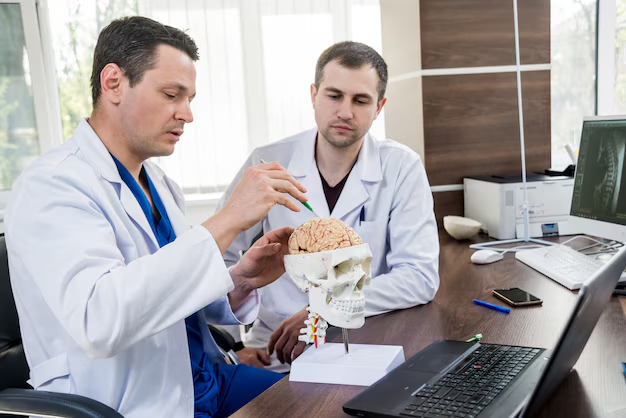Mastering the Pronunciation of Osteoporosis
Navigating medical terminology can often feel like learning a new language. Among the plethora of complex words, “osteoporosis” stands out both for its length and significance in healthcare discussions. Whether you're a healthcare professional speaking with patients or someone passionate about understanding medical conditions, knowing how to pronounce such terms correctly is crucial. But beyond just knowing the pronunciation, it's valuable to delve deeper into what osteoporosis actually is, its significance, and the contexts in which understanding this term proves beneficial.
Breaking Down the Word: How to Say "Osteoporosis"
Understanding the Phonetics
Understanding how to articulate “osteoporosis” involves breaking down the word into manageable parts. Osteoporosis is phonetically written as ahs-tee-oh-puh-roh-sis. Let's dissect this for clarity:
- Os: Sounds like “ahs,” where the 'o' is pronounced softly as in "ostrich."
- Teo: The ‘teo’ part is like “tee-oh,” similar to the first part of "tea" followed by a brief "oh" sound.
- Po: Pronounced as “puh,” akin to the "pu" in "puppy."
- Ro: Sounds like “roh,” where the 'r' is rolled slightly, common in expressions like "row."
- Sis: Ends with “sis,” pronounced the same as in "sister."
Why Pronunciation Matters
Clear pronunciation ensures that you are understood, particularly in a diverse setting where subtle differences can lead to confusion. Mispronouncing medical terms might lead someone to misunderstand the condition being described. Furthermore, with a correct pronunciation, you establish credibility and show respect for the subject matter.
Beyond Pronunciation: Understanding Osteoporosis
What Is Osteoporosis?
Osteoporosis is a condition characterized by the weakening of bones, making them fragile and more prone to fractures. It literally translates to "porous bones," indicating that bones have become less dense. This condition often goes unnoticed until a fracture occurs, making awareness and correct communication about it all the more vital.
How Does Osteoporosis Develop?
The development of osteoporosis is tied to an imbalance between bone resorption and bone formation. Factors contributing to this imbalance include:
- Age: Bone mass naturally decreases with age.
- Hormonal Changes: Especially in women post-menopause due to decreased estrogen levels.
- Diet and Lifestyle: Calcium and vitamin D deficiencies, smoking, and lack of exercise can accelerate bone density loss.
Who Is at Risk?
Certain groups are more susceptible to developing osteoporosis, including:
- Postmenopausal Women: Hormonal changes dramatically affect bone density.
- Older Adults: With advancing age, bone regeneration slows.
- Individuals with a Family History: Genetics play a significant role.
- Certain Ethnicities: Whites and Asians are at higher risk.
The Role of Communication in Osteoporosis Education
Discussing osteoporosis and ensuring accurate knowledge dissemination is critical. As more people become familiar with conditions like osteoporosis, the emphasis on precise pronunciation helps in spreading awareness and promoting understanding.
Learning and Teaching Opportunities
For educators and medical professionals, teaching pronunciation alongside the biological understanding of osteoporosis enhances learning experiences. Here are some strategies:
- Interactive Sessions: Engaging discussions can foster better retention of information.
- Utilizing Phonetic Guides: Visual aids like phonetic breakdowns help learners understand pronunciation nuances.
- Role-Playing Scenarios: Simulated conversations about osteoporosis in varied contexts offer practice opportunities.
Empowering Patients
For patients, understanding medical terms empowers them to take charge of their health. When discussing conditions like osteoporosis, patients who understand and can articulate their condition are more likely to engage proactively in their treatment plans.
Osteoporosis: Cultural and Social Implications
Exploring osteoporosis extends beyond its medical implications, touching on cultural and social factors. Here is how:
Awareness Campaigns
Awareness efforts often use straightforward language and clear pronunciation in their messages to broaden audience understanding. Whether through health workshops or community gatherings, serving clear, digestible information is key.
Stereotypes and Misunderstandings
Misunderstandings about osteoporosis could be perpetuated by stereotypes, such as viewing it solely as an "elderly" disease. Correct communication helps dismantle these misconceptions, highlighting that preventative measures are relevant for everyone, not just particular age groups.
Practical Steps in Discussing Osteoporosis
Having laid the foundation on pronunciation and understanding, engaging effectively in discussions about osteoporosis requires certain actions:
- Informative Dialogue: Use clear pronunciation to discuss prevention, symptoms, and treatment options plainly.
- Community Engagement: Participate in or initiate educational events focused on osteoporosis awareness.
- Consultation Confidence: When visiting healthcare providers, confidently articulate any concerns or symptoms, aiding both parties in better managing the condition.
Understanding Related Terms
Osteoporosis often intersects with other medical conditions and terminology. Knowing these can aid in comprehensive learning:
- Osteopenia: A precursor to osteoporosis indicating lower than average bone density, but not low enough to qualify as osteoporosis.
- Bone Mineral Density (BMD) Test: A test used to measure the density of minerals (such as calcium) to diagnose osteoporosis and osteopenia.
- Calcium and Vitamin D: Essential nutrients in maintaining bone health; deficiencies in either can contribute to osteoporosis.
Tying It All Together
Addressing osteoporosis from the angle of pronunciation to a deeper understanding of the condition builds a holistic perspective. Correctly articulating medical terms fosters clarity and ensures proper communication across educational and medical landscapes. As discussions about osteoporosis become more common, mastering how to effectively convey information—starting from pronunciation—is invaluable.
Quick Reference Summary 📌
- Pronunciation: Osteoporosis; Phonetically: ahs-tee-oh-puh-roh-sis
- Key Factors: Age, hormonal changes, diet, and lifestyle contribute to osteoporosis.
- At-Risk Groups: Primarily affects postmenopausal women, older adults, certain ethnicities.
- Empowerment Through Understanding: Knowing terms boosts patient engagement in health discussions.
- Actions: Engage in educational dialogues, community events, and confident consultations.
This summary aids in quickly grasping essential points about osteoporosis and ensuring effective communication in related conversations.

Related Articles
- a Nurse Is Caring For a Client Who Has Osteoporosis.
- a Percutaneous Is Performed To Treat Osteoporosis Related Compression Fractures
- Can Alcohol Cause Osteoporosis
- Can I Do Pilates If I Have Osteoporosis
- Can I Reverse Osteoporosis
- Can Men Get Osteoporosis
- Can Osteoporosis Affect Teeth
- Can Osteoporosis Be Cured
- Can Osteoporosis Be Painful
- Can Osteoporosis Be Reversed